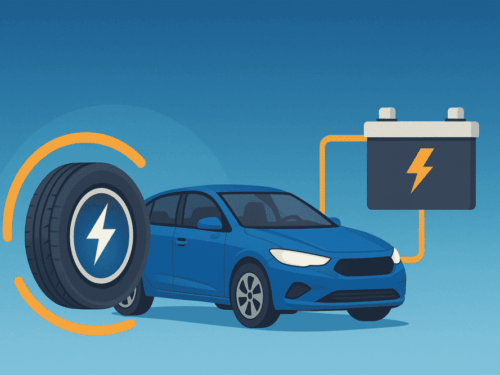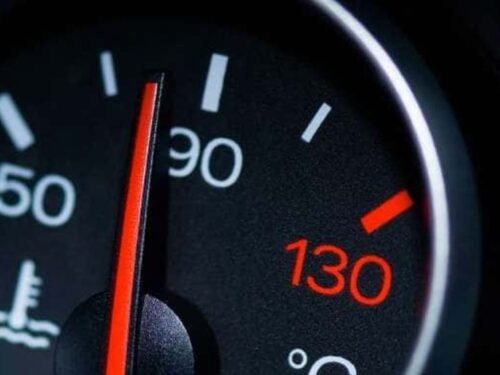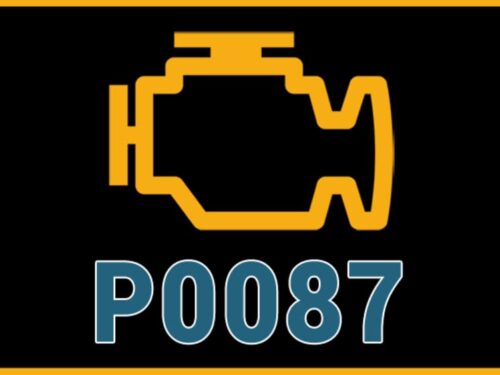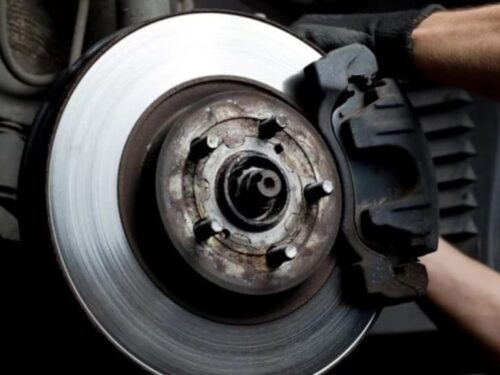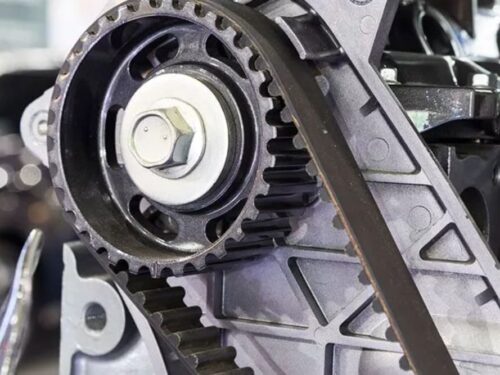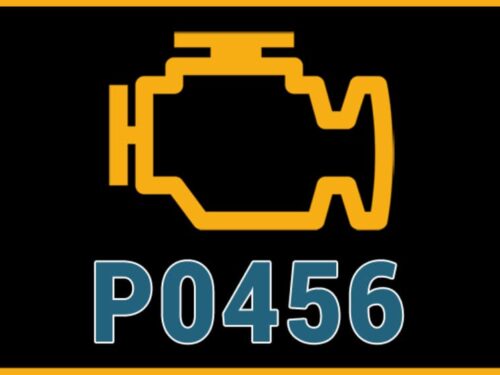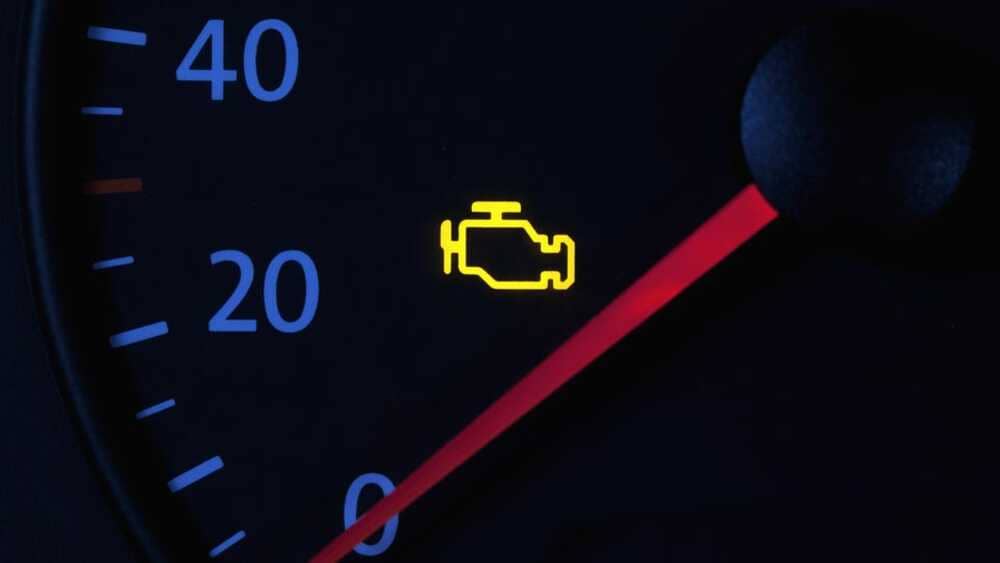
A check engine light flashing – as opposed to a continuously illuminated check engine light – should never be ignored. A flashing CEL indicates a severe problem, one that requires immediate car repair. In other words, if your check engine light is flashing, pull over and call a tow service.
Continuing to drive your car with a flashing CEL can cause irreversible damage to internal components. A blown catalytic converter – a repair that can cost $2,500 or more – is one result of driving a vehicle with a flashing check engine light. This type of problem can also cause damage to oxygen sensors and other emissions-system components.
Ultimately, an engine misfire is the most common cause of a flashing CEL. Misfires can be caused for many reasons, and we highlight what they are, common causes, and how much engine misfires cost to repair in this short guide.
WHAT IS AN ENGINE MISFIRE?
To properly run, every cylinder in your vehicle must provide the right amount of power to the engine. A misfire occurs when one or more cylinder has failed and is no longer supplying power to the engine. There are three main reasons why your engine is misfiring. They include:
- Fuel Mixture Issues – Each cylinder requires the proper mix of fuel and air. If the mixture has too much air, it’s “too lean” and may cause slow acceleration, backfiring, or needing more choke to start. A combination that’s “too rich” – e.g., it has too much fuel – causes sluggish acceleration, overheating and jerky running. This can be caused by faulty fuel injectors, a bad fuel pump or other fuel system components.
- Ignition Problems – Problems with the ignition system include improper ignition timing or plugs that aren’t providing a spark to one or more cylinders. This is the most common cause of a misfire, as ignition parts do wear over time and will eventually fail. The two most ignition system parts to cause a misfire are the spark plugs and ignition coils; you might need to replace these if you’re noticing a flashing check engine light.
- Low Compression – When one or more cylinders leak fuel or air, a compression loss occurs, and the right amount of pressure isn’t generated in the cylinders. Low compression results in low power and slow acceleration. It can also cause shaking or vibration in the cabin. Common causes include head gasket leaks, bad valves, holes in the pistons, or a bad timing belt.
SYMPTOMS OF AN ENGINE MISFIRE
In general, if your vehicle’s CEL is flashing, you’ll likely notice signs of an engine misfire. Your car will drive much differently, and you’ll also notice changes to smell and sound coming from the engine. A few of the most common symptoms of a misfire include:
- Rough Acceleration/Idle: When a cylinder is misfiring, the engine doesn’t run smoothly. You’re most likely to feel this when accelerating. The higher the RPMs, the most noticeable the feeling, which will feel jerky and bumpy. You might also notice the engine stumbles or hesitates when you speed up. A rough, uneven idle might also be noticed, as the air-fuel ratio may be off at lower RPMs. The vehicle may shut off during idle or rev unevenly, as well.
- Shaking or Vibration: Whether you’re driving a V8 or a 4-cylinder, when one of the cylinders isn’t correctly firing, the engine becomes unbalanced. You’ll notice vibrations in the cabin when accelerating or idling.
- Loss of Power: An engine misfire might also cause a loss of power. This happens when the air-fuel ratio is off, and the engine receives a mixture that’s too rich or too lean. This can cause slow acceleration, or even prevent your vehicle from passing 3500 RPMs.
- Engine Sounds Differently: If you listen carefully, you may notice a different sound from the motor. A V8, for example, has a distinctive purr when all eight cylinders function correctly. When one or more cylinder is misfiring, the engine noise will sound like it has less power.
- A Smell of Gas: If a leak or cylinder damage causes the misfire, you’ll also notice a strong smell of gasoline, as well as steam or engine oil.
WHAT CAUSES AN ENGINE MISFIRE
Numerous issues can cause engine misfires. That’s why it’s often best (and much faster) to take your car to a local service shop for diagnosis and repair. Determining the cause typically starts with an OBD reading, which will provide the code or codes that triggered the flashing light.
Usually, the code reading will provide clues as to where to look for the problem and which cylinder or cylinders is misfiring. Some of the most common causes include:
- Bad spark plugs
- Bad ignition coils
- Faulty ignition wires
- Bad timing belt
- A faulty EGR valve
- Clogged fuel filter
- Dirty fuel injectors
- Vacuum or gasket leaks
- Electrical problems
- Bad oxygen sensors
HOW MUCH DOES IT COST TO REPAIR AN ENGINE MISFIRE
Ultimately, repair costs for a misfire depend on the cause, and there are numerous causes for an engine misfire. Luckily, the two most common causes of an engine misfire are also reasonably inexpensive repairs.
- Lower Cost Repairs: Replacing spark plugs, for example, takes just about an hour of labor, and the part may cost between $20 and $100. Ignition coils cost roughly $300 to replace, depending on your vehicle’s make and model.
- Higher Cost Repairs: More significant issues like a blown head gasket or a blown catalytic converter can cost thousands. Catalytic converters can run up to $2000 in parts alone, while a head gasket replacement requires a significant amount of labor.
WHY YOU SHOULDN’T DRIVE A CAR WHEN THE CEL FLASHES
As mentioned, a flashing check engine light signals an emergency and requires an immediate repair. The longer you drive a vehicle with a flashing CEL, the more damage you may do.
If a misfire causes the flashing light, you can do severe damage to your vehicle’s catalytic converters. These converters significantly reduce exhaust emissions from your car, and they operate at very high temperatures. When your engine misfires, fuel isn’t correctly burnt by the engine, and it passes into the exhaust system. When this unspent fuel enters the catalytic converter, it can explode, and severely damage the converter.
Driving a vehicle with a flashing engine light can also cause significant damage to O2 sensors, loss to internal engine components, and catastrophic engine damage.
The best solution: If the CEL starts to flash, pull over, and have your vehicle towed to an auto service shop. If you must drive, drive to the nearest repair shop and avoid highway driving.
Courtesy of hollenshades

